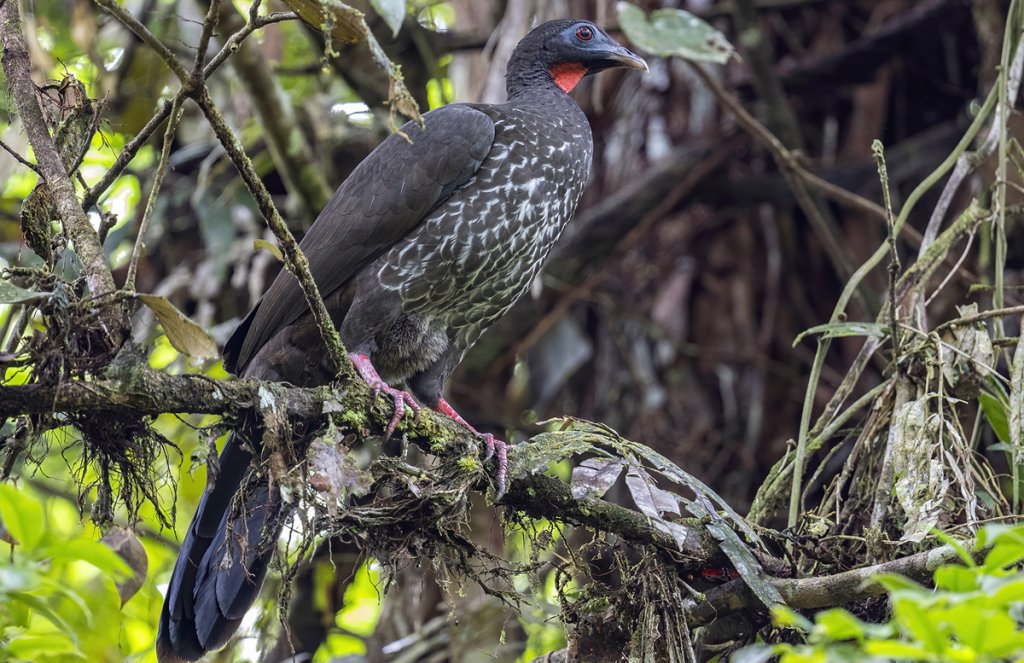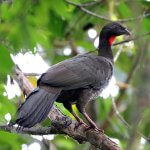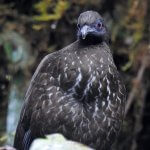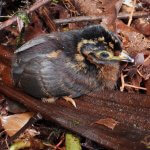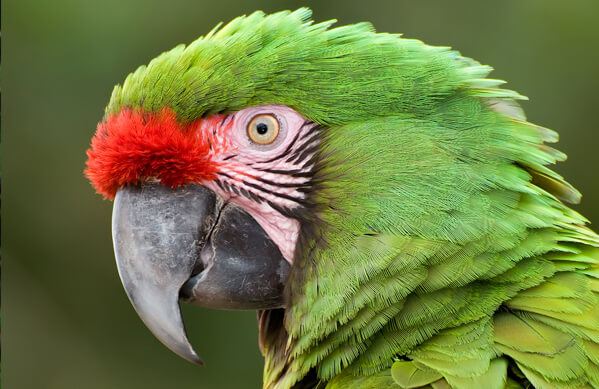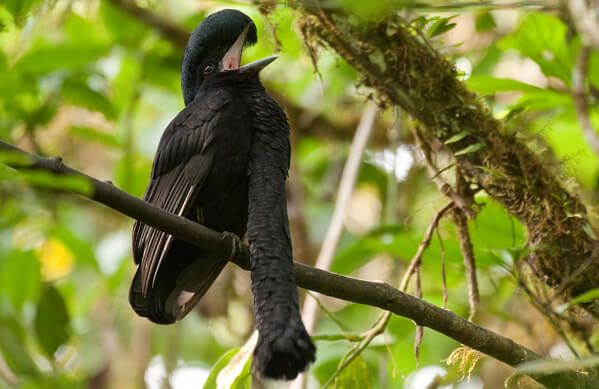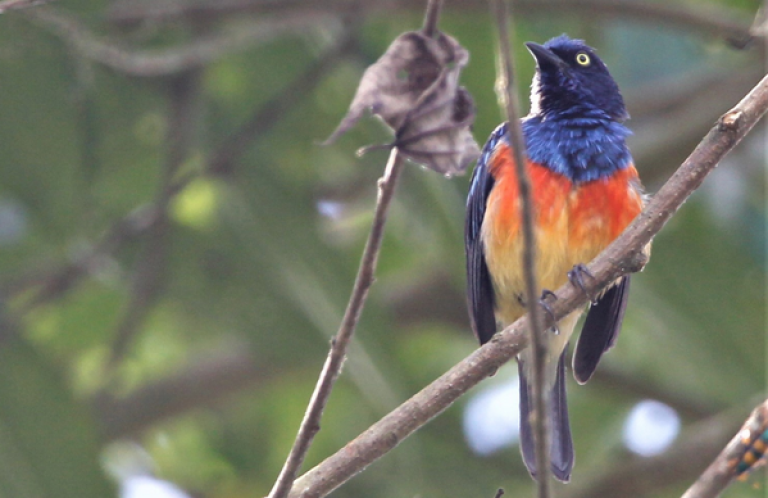About the Baudo Guan
The enigmatic and Endangered Baudo Guan is a symbol of the vanishing Chocó rainforest. Other bird species found in this diverse habitat include the Critically Endangered Great Green Macaw, Endangered Banded Ground-Cuckoo, and the Vulnerable Long-wattled Umbrellabird.
The Baudo Guan belongs the family Cracidae, a group of turkey-like, fruit-eating birds that includes 56 species found from the southern tip of Texas to northern Argentina. This bird is one of 15 species in the genus Penelope. Like most of its close relatives, the Baudo Guan is dark brown with a long tail, and has white streaking on its neck, breast, and belly. It also has a bright red throat flap or wattle, reddish pink legs, rust-colored eyes, and bluish facial skin.
Going, Going, Guan
Never common, the Baudo Guan's numbers have dropped further due to habitat loss and overhunting. This two-foot-long bird tends to be less wary than other guans and is thus easier to shoot. Likely for this reason, the Baudo Guan is one of the first birds to disappear after roads are cut into previously remote areas. While they create opportunities for people, new roads often negatively impact wildlife, which suddenly face unrestricted hunting, capture, and forest clearing.
Songs and Sounds
The Baudo Guan is often silent, but pairs communicate through dawn calls and wing-rattling displays, as well as drawn-out, high-pitched alarm whistles. The dawn calls sound like a repeated "wok wok wok wok."
Breeding and Feeding
Much to Learn
Very little is known about Baudo Guan breeding behavior. The species is known to lay two eggs in a clutch. Learning more about this species' life history will be key to successfully conserving this bird.

Penelope guans spend much of their time in trees, seeking out small fruits. The Baudo Guan is no exception; in fact, this species has rarely, if ever, been observed on the ground. Most often, two to four birds are seen perched high up or mid-level on sturdy tree branches.
Region and Range

The Baudo Guan is found only in western Colombia and northwestern Ecuador in humid foothill or lowland tropical forest known as Chocó rainforest, a biome which once blanketed large expanses from southern Panama to western Ecuador. Today, only scattered pockets of Chocó rainforest remain due to habitat loss.
Within its now-fragmented range, the Baudo Guan is rare to uncommon, and usually stays well away from towns and cities (due to hunting pressure).
Conservation
A large bird that does best in expansive, intact areas of forest, the Baudo Guan requires dedicated conservation action to ensure its long-term survival. Fortunately, the number of reserves harboring this species in Ecuador and Colombia has grown in recent decades. Ecotourists delight in seeing this shy but charismatic species during visits to protected areas such as El Pangán Bird Reserve, managed by the organization Fundación ProAves in Colombia.
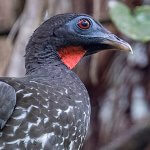
Help support ABC's conservation mission!
Another important place is the Río Canandé Reserve in northwestern Ecuador, one of the largest remaining expanses of Chocó rainforest in that country and an important refuge for the Baudo Guan, Scarlet-breasted Dacnis (Vulnerable), and wintering migrants such as the Summer Tanager and Swainson's Thrush. ABC and Ecuadorian partner Fundación de Conservación Jocotoco have worked together for decades to expand and protect this centerpiece of conservation work in Esmeraldas Province. Established in 2000, the reserve now covers nearly 21,000 acres.
Get Involved
Many of the rarest bird species in the Western Hemisphere remain relatively unknown. You can learn more about these birds and the threats they face by signing up for ABC's Bird of the Week email series, which frequently highlights these fascinating birds.
American Bird Conservancy and our partners throughout Latin America and the Caribbean have created and expanded more than 100 bird reserves, which protect upward of 1.1 million acres of vital habitat. Together, we've planted more than 6.8 million trees, helping to restore degraded and damaged habitat. You can help us continue to protect endangered birds by making a gift today.





































